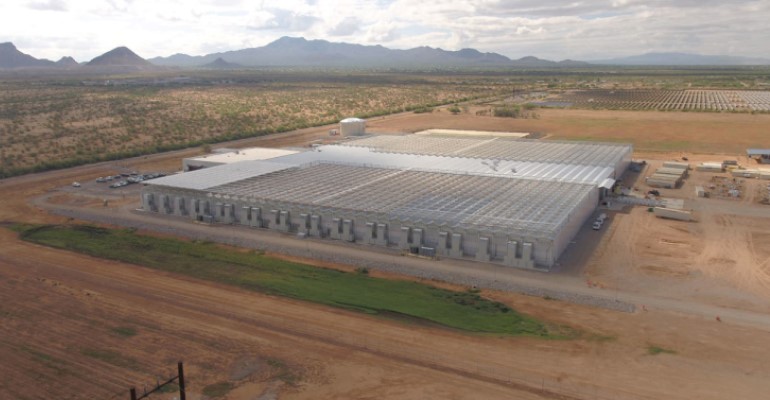All water used for crops will be recycled, and 100% of harvested material will be used for compost.
March 11, 2020

Bayer has opened its new smart, state-of-the-art, automated greenhouse facility in Marana, Ariz., in efforts to further its global commitment of providing growers with the most innovative, sustainable and technically advanced agricultural solutions.
The Marana Greenhouse facility is the first of its kind for the company and the most technically advanced. The approximately $100 million facility will serve as a global product design center for corn, the only crop to be grown there. Additionally, the Marana facility will capitalize on innovation advancements in proprietary seed chipping, advanced marker technology, automation and data science.
“With our new Marana greenhouses, Bayer is reimagining the way plant breeding is done and setting the standard for environmental sustainability,” said Bob Reiter, head of research and development for crop science at Bayer. “Meeting the unique challenges that farmers face requires different ways of thinking and working, and this new, innovative facility is one of the many ways Bayer will deliver on its commitments to farmers.”
The Marana Greenhouse, which occupies 300,000 sq. ft. of growing space, is designed for the sustainable use of inputs throughout the research process. Water used for crops will be recycled to help preserve precious desert water supplies, 100% of harvested materials will be used for compost and beneficial insects will be used to reduce pesticide applications.
By locating the Marana Greenhouse facility in the Arizona desert instead of the midwestern U.S., where corn is traditionally grown, more days of warmth and sunlight will allow researchers to maintain plants year-round, enabling three to four corn crop cycles annually. Also, by utilizing the controlled environment of the greenhouses, the breeding process is brought indoors, which eliminates crop exposure to adverse weather conditions and prevents delays in new seed development. Growing conditions can be customized to simulate various climate conditions around the world.
“Every investment in innovation is an investment in more sustainable agriculture for the next generation, and the effects travel far beyond one site,” Reiter said. “The corn hybrids developed here, under diverse growing environments and weather scenarios, will bring innovation to growers in every part of the world.”
You May Also Like



